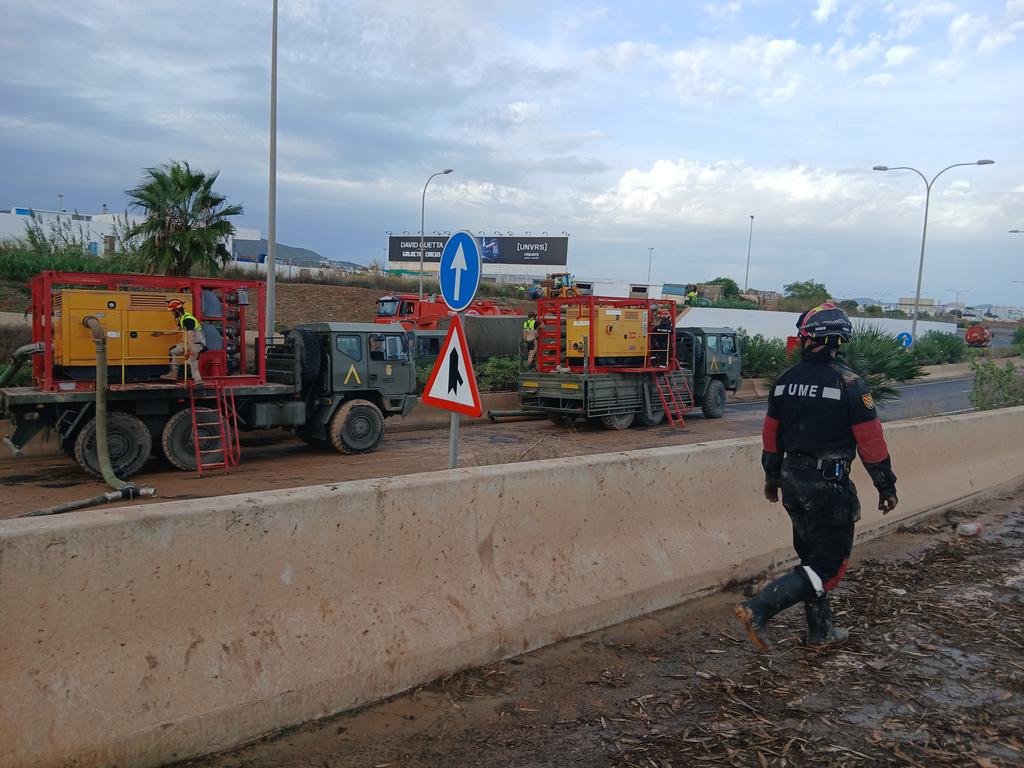CARS were swept through streets like toys and helicopters were scrambled to rescue trapped drivers as Storm Alice unleashed torrential rain across eastern Spain and the Balearic Islands.
The violent system struck on October 12 and 13, bringing with it multiple red alert weather warnings and drenching coastal provinces from Castellon to Tarragona and slamming into Ibiza and Formentera with record rainfall.
In Ibiza, military emergency units (UME) were deployed with pumps and water tankers to clear the flooded EI-800 road leading to the airport.
Aerial footage showed soldiers draining huge pools of water after the carriageway was completely submerged.
Across the Balearics, Spain’s weather agency AEMET recorded 70mm in Sant Joan de Labritja and 50 at Ibiza Airport.
On the mainland, the situation was equally severe. The A7 motorway, one of Spain’s busiest routes, disappeared under water near Vinaros in Castellon — an area still recovering from the floods that devastated Valencia last month.
In Tarragona province, the Montsia region bore the brunt. Towns including Godall and Alcanar saw streets turned into rivers, cars overturned and homes flooded after more than 200mm fell in barely two hours.
READ MORE: Storm Alice causes chaos for tourists across Spain’s Mediterranean coast
The barranc del Suis burst its banks between La Rapita and Alcanar Platja, sending torrents of muddy water through residential streets.
Emergency services reported 255 callouts across southern Tarragona, mostly to rescue motorists or pump water from buildings.
A weather station in Freginals recorded an extraordinary 280mm — most of it within four hours.
Drone footage captured the damage in Alcanar, where residents said early warnings had prevented fatalities despite extensive material losses.
The storm also tore into beaches along the Ebro Delta, destroying sections of Les Delicies in La Rapita and eroding dunes already weakened by past storms.
Locals voiced exhaustion and despair at the recurring autumn floods. “It demoralises me to think the Mediterranean will be a bomb every autumn,” one wrote.
By Sunday, skies had cleared and authorities began assessing the damage.
But meteorologists warned the episode fits a worrying pattern of ever-stronger gota fria systems — also known as DANAs — fuelled by rising sea temperatures in the Mediterranean.
Click here to read more Weather News from The Olive Press.








